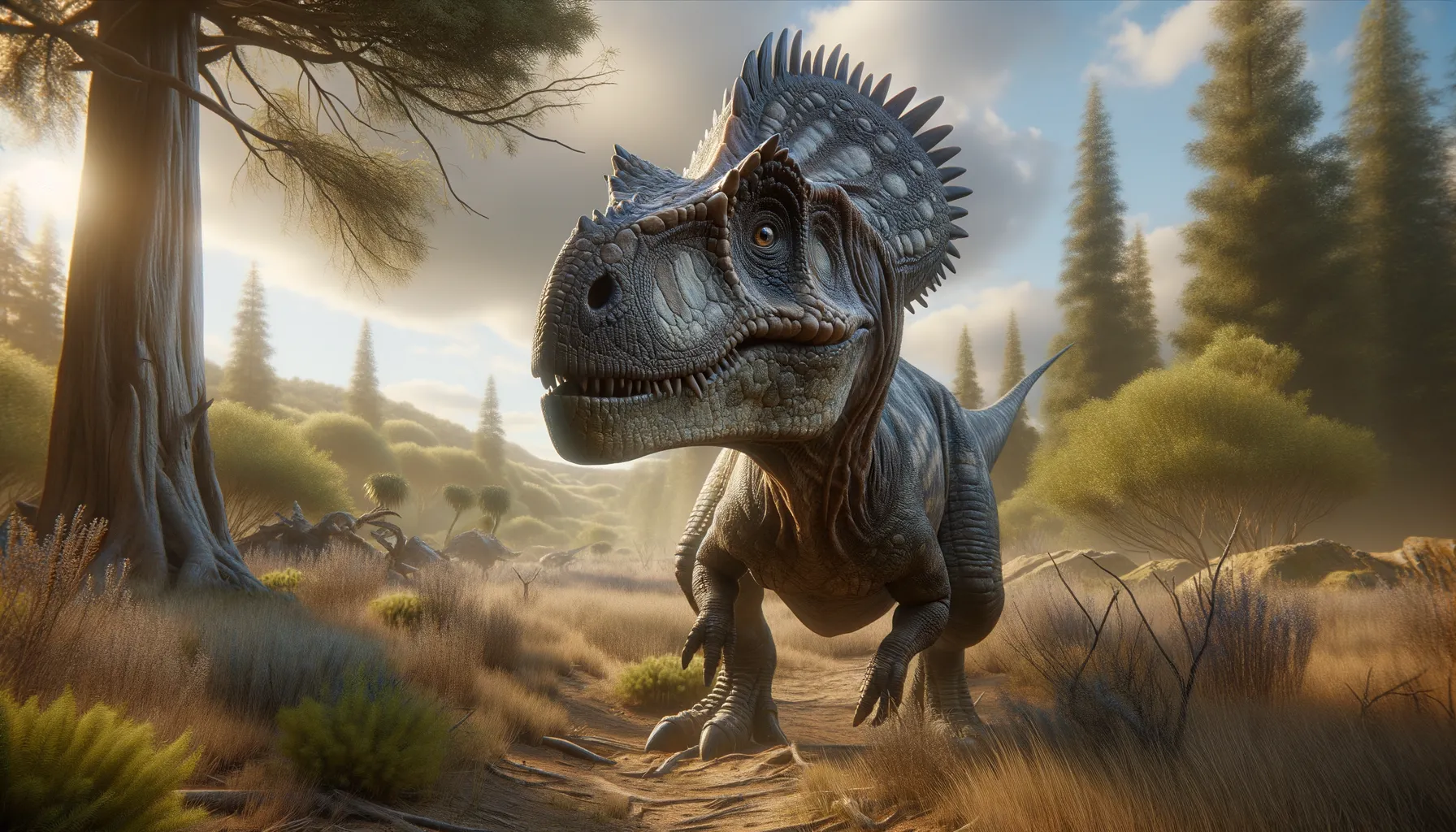
Acrotholus
The dome-headed speedster of the Cretaceous!
Period
Cretaceous
Length
Around 1.8 meters (6 feet) long.
Height
Approximately 1 meter (3 feet) tall.
Weight
About 40 kilograms (88 pounds).
Acrotholus was a small, bipedal dinosaur known for its thick, domed skull. It roamed areas that are now part of North America during the Cretaceous period, roughly 85 million years ago. Acrotholus's robust skull structure suggests it may have used its head for defense or combat with rivals. While much of its lifestyle remains a mystery, its discovery has provided valuable insight into the evolution of small-bodied dinosaur species.
Diet
Acrotholus was a herbivore, feeding on low-lying vegetation. It likely consumed a variety of plant material available in its habitat, which included ferns and leaves.
Hunting
Being a herbivore, Acrotholus did not hunt prey. Instead, it foraged for food, likely using its keen senses to detect edible plants and defend its territory from potential threats.
Environmental challenges
Acrotholus faced fluctuations in climate and vegetation, which impacted its food supply. Predators also posed threats, leading to the development of defensive behaviors. The natural environment was competitive, with various herbivorous and carnivorous species coexisting.
Speed
Likely a fast runner due to its small size.
Lifespan
Exact lifespan unknown, estimated to be around a decade.
First discovery
Discovered in southern Alberta, Canada, in 2013.
Fun Facts
- Acrotholus was a small, dome-headed dinosaur that lived about 85 million years ago during the Late Cretaceous period.
- Its name means 'High Dome' in Greek, referring to its thick, curved skull, which could be up to 10 centimeters thick.
- Despite having a big, bony head, Acrotholus was quite small, measuring about 6 feet long, roughly the size of a large dog.
- Acrotholus is part of a group of dinosaurs known as pachycephalosaurs, which are famous for their thick skulls.
- Scientists believe Acrotholus used its domed head to headbutt others of its kind, either for mating displays or to defend territory.
- The fossil discovery of Acrotholus was particularly important because it provided insights into the early evolution of dome-headed dinosaurs.
- Acrotholus is one of the oldest known bone-headed dinosaurs, helping paleontologists understand the diversity and evolution of this group.
Growth and Development
The growth of Acrotholus involved significant skeletal development, especially in its skull. Its robust dome likely developed as it matured, possibly linked to social or defensive functions. Juveniles would have faced higher predation risks, influencing their behavior and growth patterns.
Habitat
Acrotholus inhabited open areas with abundant plant life, providing both food and camouflage. These regions likely included plains and forest clearings. Its habitat provided a challenging environment, necessitating adaptation to avoid predators and changing plant availability.
Interaction with other species
Acrotholus coexisted with a variety of other herbivorous dinosaurs and small mammals. It likely faced competition for food from other herbivores. Its interactions with predatory species would have been defensive, relying on speed and its skull for protection.
Natural lifespan
Acrotholus's natural lifespan was likely influenced by predation and environmental factors, averaging around 10 years.
Reproduction
Acrotholus reproduced by laying eggs, likely in small clutches to enhance survival. Nesting behavior might have involved selecting areas with cover for protection against predators. Parental care strategies remain unclear but could have involved some level of proto-parental attention.
Social behaviour
Acrotholus might have lived in small groups for protection and social interaction. Its domed skull could have been used for head-butting competitions. Such social behaviors would have strengthened its ability to defend resources and interact with others of its species.
Fossil locations
Fossils of Acrotholus have been found in Alberta, Canada. These discoveries provide essential insights into the diversity and adaptations of small-bodied dinosaurs. The region continues to yield important fossil records, enhancing our understanding of dinosaur ecosystems during the Cretaceous period.
